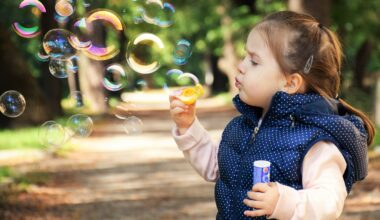Dance Fitness Competitions and Opportunities for Kids
Dance fitness offers an exciting and dynamic platform for kids to express themselves, while also promoting health and coordination. As children engage in dance activities designed for fitness, they learn various styles that improve their physical capabilities. Competitions in dance fitness are increasingly popular, providing young dancers the chance to showcase their best moves and hard-earned skills. These contests often focus on creativity, technique, and teamwork, allowing kids not only to compete but also to collaborate with peers. Moreover, dance fitness competitions can be found in various formats, such as solo performances and group events. Additionally, schools and local dance studios frequently host these events, cultivating a spirit of healthy competition among young participants. Parents and guardians can support their children by encouraging them to participate, ensuring they prepare adequately and fostering their passion. Furthermore, these competitions help instill confidence and discipline in children. In summary, dance fitness competitions present exceptional opportunities for kids to thrive, grow in their dance practice, and enjoy themselves while keeping fit.
The importance of proper training for competitive dance fitness cannot be overstated. Young dancers need to learn foundational techniques and strength to ensure their performances are not only impressive but also safe. Enrolling in dedicated dance fitness classes assists children in developing skills, enhancing their flexibility, and improving their stamina. With qualified instructors, kids receive crucial feedback to refine their techniques and performance style. Additionally, participating in workshops or extra sessions can elevate their abilities further. Many dance studios also organize training camps specifically for competition preparation. These camps often include specialized workshops that expose young dancers to different dance styles, enriching their overall experience. While training is essential, practicing at home also plays a vital role in improvement. Parents can create a supportive space, encouraging their children to practice regularly, which helps reinforce skills learned in class. Safety should be prioritized, ensuring that kids understand the importance of warming up before practice sessions. In essence, the combination of structured classes, support at home, and specialized camps creates a solid foundation for youth in dance fitness competitions.
Choosing the Right Competition
When it comes to dance fitness competitions, selecting the appropriate event can significantly impact a child’s experience. Dancers should consider their skill level and preferences when researching competitions. Opportunities vary based on age groups, dancing styles, and levels of experience. Some competitions embrace a wide array of dance genres, while others focus exclusively on particular styles, such as jazz, hip-hop, or ballet. Families can access various resources online to find competitions in their area. Local dance studios often provide information on upcoming competitions, and websites dedicated to dance events can also be helpful. It is crucial for parents and guardians to discuss competition goals with their children, ensuring they understand what to expect. Participation in competitions should enhance their love of dance rather than induce anxiety. Observing previous competitions can help kids visualize the environment and better prepare mentally. Once the right competition is selected, dancers can then focus on preparing routines with their instructors. In summary, choosing the appropriate dance fitness competition can lead to a rewarding experience for young dancers.
In addition to enhancing their dance skills, competitions provide excellent opportunities for kids to make lasting friendships. Through these events, participants often meet fellow dancers who share similar interests and aspirations. Collaborative experiences of training, rehearsing, and performing together help to forge connections. Moreover, the atmosphere of unity and camaraderie in a competition setting can foster new friendships that extend beyond dance. Young dancers learn to support each other, celebrating achievements while also facing challenges as a team. This social aspect of dance fitness is vital for children, as it encourages teamwork and communication skills. Additionally, many competitions include workshops and breakout sessions designed specifically for dancers, boosting connectivity among peers. By building relationships in dance environments, kids develop essential interpersonal skills that benefit them in various aspects of life. This sense of community in dance fitness not only teaches practical dancing techniques but also imparts valuable lessons about collaboration and empathy. Ultimately, these connections enhance the overall dance experience, making participation in competitions a remarkable journey for kids.
Showcasing Skills and Earning Recognition
Participating in dance fitness competitions grants young dancers an opportunity to display their hard work and dedication to an audience. Showcasing skills on stage brings a sense of pride and accomplishment. Many competitions provide awards, trophies, or medals, recognizing talent and effort. Earning these accolades serves not only as a physical reminder of success but also boosts young dancers’ confidence significantly. Recognitions can vary, with some competitions granting titles, while others focus on specific categories such as technique or originality. Parents and instructors can further inspire dancers by highlighting their achievements, encouraging them to celebrate both small and big wins. Constructive feedback from judges allows dancers to learn and grow, helping them refine skills and performances for future competitions. Additionally, performance opportunities may help young dancers gain exposure within the dance community, opening doors for future endeavors, such as scholarships or further training. Successfully showcasing their skills fosters ambition, motivation, and aspiration in kids, setting them up for potential future success within the world of dance fitness.
As dance fitness continues to grow in popularity, so do the opportunities available for young athletes. Many reputable organizations and studios are dedicated to promoting dance as a viable fitness pathway. These entities often host events that encourage competition and skill development for youth. By partnering with schools and local communities, they create numerous programs designed for different age groups and skill levels. Additionally, social media platforms play a huge role in promoting dance fitness events, allowing kids to find out about competitions and workshops easily. Kids can also engage with role models from the dance fitness community through online challenges and virtual platforms. Exposure to professional dancers can ignite a spark for kids, inviting them to aspire towards becoming skilled dancers themselves. With a wealth of resources available, families can actively participate in the flourishing dance fitness environment. By enrolling their children in classes or workshops, parents ensure a supportive foundation for their growth. In conclusion, the expanding opportunities in dance fitness present a bright future for young dancers passionate about staying fit and expressing themselves.
The Future of Dance Fitness for Youth
As trends in fitness continue to evolve, dance fitness for kids is likely to remain a pivotal element of youth culture. The increasing emphasis on mental and physical health ensures that participation in dance-related activities will gain attraction, as families recognize the numerous advantages associated with dance. Dance promotes not only physical fitness but also enhances emotional well-being, helping children develop healthy lifestyle habits. Educators and parents can also work together to emphasize the significance of integrating dance and fitness into school curriculums. Such initiatives not only cultivate interests in dance but also encourage increased participation in various competitions. Furthermore, technological advancements are poised to create innovative platforms for kids to engage with dance fitness. From virtual classes to interactive workshops, children will have more access than ever to learn and grow in their dance journey. As the dance fitness community continues to expand and evolve, it becomes essential for families to support their children’s interests. In doing so, young dancers can thrive, enjoying the numerous benefits of dance fitness well into their future.
With a growing interest in dance fitness competitions, it’s clear that opportunities for youth will expand even further. Looking ahead, families should remain engaged with their children’s dancing endeavors. As competition events unfold, observing their children perform will cultivate enthusiasm for training. Parents can encourage kids to set goals, envisioning where their dancing journeys may lead. With proper guidance and support, young dancers can thrive in their pursuits. Dance fitness is more than just an activity; it promotes camaraderie, fosters discipline, and encourages creativity. As children explore the fascinating world of dance, they learn essential life skills that go beyond the dance studio. Families should celebrate achievements and be present through various events, ensuring that their child’s passion for dance fitness remains strong. Recognizing dance not only as a hobby but also as a potential career option can lead to exciting opportunities. In supporting children every step of the way, families can contribute to fulfilling and rewarding experiences in the dance fitness world. Overall, engaging with youth in dance fitness will pave the way for a brighter future filled with movement, friendship, and lifelong passion.


